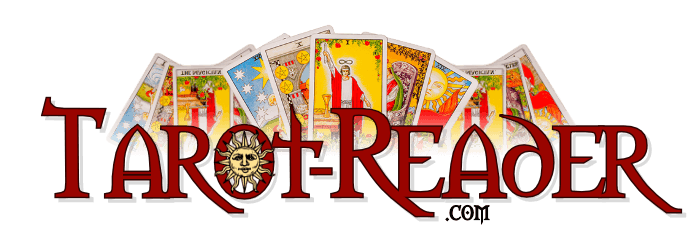The Moon
The Moon (XVIII) is rich with symbolism. The Moon hangs serenely over a mountain range and two towers where a snaking crossroads leads to a river where a crawfish crawls out. A dog and a wolf howl up at the Moon. This is a dreamy and very symbolic card.
The Moon sits between two towers, the right life and the left life. The conventional path or the unconventional path. Beyond them are craggy mountains representing the uncertainty of our journeys. A road leads to them. This is the journey of life.
The journey begins in the water, the cradle of life, and crawling out of it – oddly enough – is a crayfish, representing the birth of consciousness. After all, crayfish live in the water and they can’t breathe on land. Yet, this one not only does that, but also braves walking between two possible predators who might perceive it as a tasty snack.
Perhaps the crayfish’s ignorance of land predators gives it the courage to venture on. If anything in the card represents the querent, it’s that crayfish.
The dog and the wolf represent the tame and wild parts of every person. They co-exist, and one is very much like the other. One starts from the other. One simply cannot be without the other. There would be no domestic dogs without wolves. Here, they howl together like wild animals.
The Moon is a mysterious card. It is both dangerous and promising, depending on who draws it, where, and when. It deals with dreams, illusions, fears, and the wonders of the imagination. The querent is called to look beyond the veil of normal human experience and see what proliferates in the dark of night.
When a client or querent draws The Moon, it means that this person is experiencing a phase confusion, wonder, and possibly irrational fear. They may also have a sense of life being surreal or dream-like, which could be like a pleasant dream or a downright nightmare, depending on who is walking with them, the dog or the wolf.
The Moon card can also indicate a querent who is wandering, groping in the dark, without direction. They may be either following their instincts and not listening to the world, or frightened and desperate for direction. Not all who wander are lost, but those who are lost should wait until daytime to complete their journey.
When the Moon card is Reversed:
The reversed Moon tells of a querent overcome with irrational fear, confusion, and anxiety. This person may also be so lost in fantasy that they lose sight of what is real and what isn’t.
The querent may have such a preference for fantasy that it becomes their life, and the limit their interactions with the real world to preserve their inner life, much to their own detriment.
This can also indicate a querent who, like the crayfish walking on land and embarking on a journey to the mountains, is grossly overestimating their ability or experience to handle what happens next.
In a three-card reading, this card means…
Past: In the past, the querent was either lost in a dream, or lost in reality. Either way, they lived in a fog where they weren’t quite in touch with the rest of the world. They may have discovered some interesting things about themselves they wouldn’t have learned otherwise.
Present: The querent is currently experiencing a sort of alternate reality or dark night of the soul in which they feel lost, uncertain, or deluded in some way. They may not be in touch with reality, which can be good or bad, depending on the situation.
Future: In the future, the querent will experience a time in which the question the things they simply assume are true and test their mental, emotional, and spiritual limits. There may be a crisis of faith or an identity crisis on the way.
